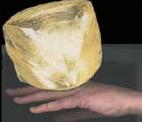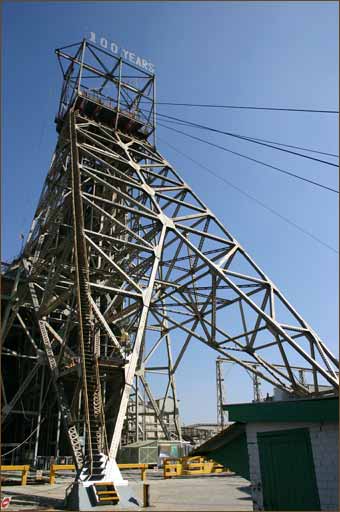
 Home
Page Back Ground History
Mining Regions
The Postcards
The Tokens
Links
Bibliography
Acknowledgements
Site
Forum Cards & Tokens Classified Ads.
Guest Book
Updates & News Contact
The Site
Home
Page Back Ground History
Mining Regions
The Postcards
The Tokens
Links
Bibliography
Acknowledgements
Site
Forum Cards & Tokens Classified Ads.
Guest Book
Updates & News Contact
The Site
 Home
Page Back Ground History
Mining Regions
The Postcards
The Tokens
Links
Bibliography
Acknowledgements
Site
Forum Cards & Tokens Classified Ads.
Guest Book
Updates & News Contact
The Site
Home
Page Back Ground History
Mining Regions
The Postcards
The Tokens
Links
Bibliography
Acknowledgements
Site
Forum Cards & Tokens Classified Ads.
Guest Book
Updates & News Contact
The Site

 Cullinan
Cullinan
Location: Central Transvaal (View location on map)
Minerals Worked: Diamonds (Kimberlitic)
Principal Mines: Premier Diamond Mine -(otherwise known as the the New Premier Diamond Mine to differentiate it from Wesselton Mine in Kimberly which was also known for a time as the Premier Diamond Mine).
Background History:
This mining township lies 38 km north-east of Pretoria. It takes its name from Sir Thomas Cullinan and holds the honour of being the location where the world's largest known diamond was discovered in 1905.
One of the earliest reports of diamond discoveries in this area dates back to 1871 when a 4 1/4 carat stone was found on a farm near Pretoria. Further gems were also found on the banks of the Elands River and several other places in the locality.
The area occupied by Cullinan and the Premier Diamond Mine was originally part of the "The Cornelis Minnaar Farm", which was registered on 7th November 1859. Cornelis sold a portion of the farm to his brother Roelof Minnaar in 1861, who in turn sold the northern part of it to Willem Prinsloo for £570 on the 7th December 1896.
By 1898 Thomas Major Cullinan, an influential building contractor, was already prospecting for diamonds on the Prinsloo farm for which he tried to obtain an option on but failed. When Willem Prinloo died in 1898, shortly before the out break of the Anglo Boer War (1898-1902) Maria Prinsloo became the farm's new owner.
After the war the Maria's brothers returned to the farm. The family were in dire need of money and so when Thomas Cullinan re-opened negotiations with them to buy it they agreed to its outright sale for the sum £52,000.
The company which Cullinan founded to prospect on and mine the Prisloo's old farm was initially registered as the Premier Syndicate on 6th November 1902 and then re-registered on the 1st December 1902 as The Premier (Transvaal) Diamond Mining Company Ltd.
Surface prospecting and the sinking of expository bore wholes started immediately and in early April 1903 William McHardy became the company's first general manager. The diamondiferous ground at Cullinan was found to comprise a huge volcanic chimney or pipe which outcropped on the surface over a pear shaped area covering at least 80 acres. The deposit had a limestone capping. Under this lay about thirty feet of "yellow ground" (oxidised kimberlite) which gradually merged into unaltered "blue ground" similar to the diamond pipes of Kimberly. The "blue ground" of the Premier Mine is much more friable than that of the Kimberley mines and does not need exposing to prolonged surface weathering prior to processing. Instead the diamond bearing rock was amenable to direct washing, thereby eliminating the expense and loss of time resulting from it requiring to be spreading on oxidation floors.
Production at the Premier Mine began on 24th April 1903. The diamond bearing earth was removed from the open pit by an endless rope haulage system and delivered to a steam driven processing plant (known as No.1 Gear) comprising of rotary pans. This washing plant was located on a small elevation at the edge of the open crater. Tailings slurry was discharged from the plant by gravity into an adjacent low lying area of land. The plant's concentrate went through a final stage of cleaning via a stage of manual picking and sorting by hand. By 1904 the mine already very prosperous and comprised three open-cut pits employing more than 2000 people.

A facsimile of the Cullinan Diamond in its raw un-cut state.
On the 25th January 1905 a diamond of 3253.75 carats in its uncut state was found in the side wall of the open workings of No. 2 Mine by the mine manager, Mr. Frederick Wells who had previously been employed in the Kimberley mines. While making his rounds of inspection Wells' eye caught a glint of light emanating from some debris. On investigating he found that the source of the glint was a large stone resembling a block of ice, measuring 4 by 2.5 by 1 to 2 inches. Wells placed his find in the pocket of his coat he took it to the company's office where its importance was quickly realised. Immediately the news was transmitted by telegraph and cable to all parts of the world that the world's greatest diamond had been discovered. The stone was christened "The Cullinan Diamond" after the company's chairman. At the instance of Premier Botha, the Transvaal Assembly presented the great diamond to King Edward VII in recognition of his granting a constitution to the Transvaal Colony. The stone had four cleavage planes, which led experts to surmise that other pieces of the same stone are still in the mines.
The two principle stones subsequently cut from the Cullinan Diamond are now to be found in the British Crown Jewels. The larger of the two, known as the "Star of Africa" (530 carats) was set in the Royal Sceptre and the smaller, the "Lesser Star of Africa" (317 carats) was set in the Imperial State Crown.
The year 1914 proved to be the start of difficult times. Tree hundred and eighty one European employees were discharged for provoking industrial disturbances at the mine. When the price of diamonds plummeted during the outbreak of The Great War in Europe in August 1914, all operations at the mine were suspended.
On the 16th January
1916, Premier Mine resumed production and in 1917, the De Beers Consolidated
Mines acquired a controlling interest in it.
During 1918 nearly every family of the Cullinan communities lost a member to the
virulent flu epidemic.
The great depression which started in America in 1929 affected the rest of the world and in 1932 operations at the Premier mine were again suspended. By 1933 deprivation and hunger were experienced not only in Cullinan but also throughout the country. The retrenched employees were permitted to remain in occupation of the company's houses rent free. They were also provided with water, lights, sanitary and medical services free of charge. The nearby Zonderwater farm came to the rescue by providing soup kitchens for the hungry children. By the time World War II started in 1939, the village were nearly deserted.
Between 1941-1945 the biggest concentration of Italian Prisoners of War, over 90,000, who were captured in North Africa, were housed in South Africa at Zonderwater Prison. During this period the army took over the village and even the golf course was used to pitch tents on. After the war ended in 1945, many POW's elected to stay on in South Africa , though only 30,000 were eventually permitted to remain.
In 1945 all the rain water that had accumulated over the twelve years that the mine had been closed was pumped out and the mine resumed production.

Headgear at the Premier Diamond Mine
Currently the Premier Mine (now renamed by De Beers as the Cullinan Mine) is still in production and remains the source of some of the world's finest diamonds.
Postcard issues relating to this mine were extremely prolific from the Edwardian period onwards. Given the wide breath of subject matter covered by these cards they have been subdivided into the following categories for listing and discussion purposes.